Decoding Your Indian Ringneck Parakeet’s Body Language
Indian Ringneck Parakeet Body Language and vocalizations give great insight into their moods, needs, and overall wellbeing. Learning to interpret your parakeet’s unique signals allows you to understand them on a deeper level.
This guide will explain common Indian ringneck behaviors so you can become fluent in parakeet sign language. We’ll cover everything from displays of affection and contentment to indicators of stress or irritation. You’ll also learn how parakeets express their need for attention, food, or just some one-on-one playtime.
With this knowledge, you’ll be able to build a stronger relationship with your feathered friend based on clear communication. You’ll enjoy interacting on a whole new level once you understand the nuances behind every chirp, wing flap, and head bob. Equipped with the ability to “speak parakeet,” you’ll never view your bird the same way again!
So let’s get started learning how to read your parakeet’s body language and respond appropriately to their unique means of expression. This guide will deepen your bond and reveal sides of your parakeet you never knew existed!
Positive Daily Behaviors
Parakeets have many healthy behaviors as part of their normal daily routine. Watch for these pleasant and interesting activities:
Morning Calls
The first sounds your parakeet makes upon waking are important “morning calls.” These loud chirps, whistles and contact calls communicate location and condition to their flock. It signifies “I survived the night!”
Indulge this natural behavior but avoid reinforcing anxious screaming. Greet your parakeet gently and mimic their chirps. Start morning routines immediately so they transition smoothly into daytime mode without distress. Maintaining consistency and providing stimulating activities prevents excessive morning vocalizations.
Preening
Preening involves using the beak to meticulously clean and align each feather. Parakeets have a preen gland above their tails that secretes oil. They rub their beaks into this gland and then distribute the oil throughout their plumage. This keeps feathers flexible and waterproof.
You’ll notice frequent preening throughout the day, especially after bathing. It’s a maintenance must for keeping feathers in pristine condition. Some signs of preening include repeatedly running the beak down feathers, nibbling at wings, and rubbing the head against the body. Pay attention and you’ll be able to distinguish preening from similar activities like scratching.
Beak Grinding
Parakeets grind their upper and lower mandibles together to self-sharpen the beak. The gentle grinding noise indicates contentment. It often accompanies yawning as the bird settles into a relaxed state.
Beak grinding serves the practical purpose of keeping the beak trim and healthy. Overgrown beaks can cause problems like difficulty eating. So take those soft grinding sounds as a sign your parakeet is happy, comfortable and taking care of beak maintenance!
Stretching
Parakeets extend their wings fully away from the body and stretch out their legs to relieve tension. It mimics human morning stretches before easing into the day’s activities. Stretching may also incorporate tail fanning as an accompaniment.
Watch for this bird version of yoga as a sign your parakeet is stimulating its muscles and joints. Birds that spend most of their time confined in cages especially appreciate a good soothing stretch. Try to let your parakeet spend time exploring outside the cage daily so it can stretch wings and legs adequately.
Wing Flapping
You’ll notice brisk flapping of the wings when your parakeet is perched or clinging to the cage side. This flapping strengthens pectoral muscles important for flight. It also signals excitement and zealous anticipation.
Rapid flapping may precede ambitious flights around the room as your parakeet gets exercise. Or it may simply express eagerness for interaction and play. Either way, wing flapping displays a healthy energetic spirit.
Head Bobbing
Bobbing the head up and down signals keen interest and attentiveness. It’s very common in young parakeets approaching weaning age. They bob heads rapidly when extremely eager to be fed.
Many parakeets continue head bobbing as adults, especially when enthusiastic for food or human attention. Respond to the head bobbing with praise or treats to positively reinforce this cute behavior. It shows your parakeet’s exuberance.
Feather Ruffling
Watch for brief fluffing up of all the feathers over the entire body. This signals happiness and anticipation of positive interactions. It often precedes affectionate cuddling time with favored humans.
Feather ruffling also aids preening by ensuring oil distribution after being spread around by the beak. It gives fresh air contact with the skin below to maintain healthy pores. So both physically and emotionally, feather ruffling is a feel-good behavior.
Yawning
You may see your parakeet open wide into a yawning expression. Unlike humans, this doesn’t mean boredom in parakeets. Yawning signals comfort, contentment and readiness to settle in for rest. It may aid crop adjustments after a meal too.
So when you see those yawns, your parakeet is relaxed and unworried. Respond by speaking or whistling softly to further soothe your bird into a sleepy state. Those yawns will soon lead into cozy napping postures.
Clearing Crop
The crop is a pouch near the throat that birds use to store food for digestion. Parakeets constantly adjust and clear the crop as they swallow food. This may appear as frequent neck stretching or gaping motions.
Clearing the crop helps ensure steady digestion and optimal nutrition absorption. So while the motions may look concerning at first, they’re perfectly normal for healthy birds. Stay alert for any blockages or sour crop issues though, which could disrupt normal clearing.
Read Next: Indian Ringneck Parakeets: Overview, Characteristics and Care
Displays of Affection
Parakeets show love to their closest human companions through some charming behaviors. Watch for these signs that your parakeet truly trusts and bonds with you:
Regurgitating Food
When a parakeet brings up food from its crop and offers it to you, this shows a powerful attachment. In the wild, mating pairs nurture their young by regurgitating pre-digested food into their mouths.
If your parakeet regurgitates for you, it likely sees you as its mate. Politely turn away or refuse the gift if presented, as constant regurgitation can confuse the bonding relationship. But do see it as a compliment that your parakeet views you so affectionately.
Heart-Shaped Wings
A common courtship display many male parakeets direct toward mates is standing tall, raising their wings up into a heart shape, and strutting back and forth. If your male parakeet does this cute display for you, he thinks you’re a potential partner!
Gently discourage this flirtatious notion to avoid relationship confusion and sexual frustration for your parakeet. You can turn away or distract with a toy instead. But take it as a sign he sees you as special.
Bowing and Strutting
Along with heart-shaped wings, male parakeets may bow forward, pivot their heads side to side, and strut proudly to showcase affection. It mimics their winning mate rituals.
Enjoy the sentiment but limit positive reactions to avoid reinforcing territorial or mating ideas in your parakeet’s mind. Divert his attention elsewhere calmly but consistently. You remain his trusted human companion.
Crouching and Clucking
When receptive female parakeets wish to nurture mates, they crouch down, cluck softly, and sway their tails. If your female parakeet does this toward you, she’s showing a motherly instinct of care.
Be flattered by this sign she sees you as someone to pamper and protect. But avoid petting or preening her in ways that could reinforce sexual notions. Keep interactions light and friendly to maintain a healthy familial bond.
Lowering Head
A parakeet that lowers its head, leans down toward you, and ruffles neck feathers wants a good scratch. Present a gentle finger to indulge this request for affectionate attention. Stick to the head and neck area.
This posture shows your parakeet fully trusts you and believes you will not harm it. Building routines around this special bonding time is important. Always keep petting gentle and proper.
Blushing
Some parakeets like macaws have the ability to “blush,” becoming flushed with reddish face coloring. This happens due to excitement over potential mates. If your parakeet blushes for you, they find you very attractive!
As with other mating displays, gently discourage the sexual component of blushing. But do enjoy the affectionate sentiment and bond it reveals. Channel your parakeet’s energy into positive Reinforcement training and fun activities instead of inappropriate mating notions.
Warning Signs Before Biting
Parakeets will typically nip only as a last resort after giving clear signals to back off. Watch for these warnings before biting:
Eye Pinning
This is when the pupils suddenly contract into pinpoints. It indicates a heightened emotional state, either fear or aggression. Your parakeet feels threatened and defensive. Move away slowly and calmly.
You may notice head turning to fixate eyes on you as well. Never stare into a parakeet’s eyes, as this can seem challenging. Look at their chest instead and blink normally. Allow some quiet space for mood de-escalation.
Graveling Sounds
Listen for low gurgling noises from the throat. This “growl” communicates irritation and means “cease and desist” before hostility rises further. Immediately stop whatever is annoying your parakeet.
You can also offer a favorite treat to interrupt the tension and change focus. But beware putting fingers too close to the beak in this aggravated state. Give space for the frustration to settle before approaching again.
Fluffed Head Feathers
Watch for a parakeet fluffing up the feathers on its head until it looks twice the normal size. This makes the bird appear bigger to seem more imposing. Your parakeet feels encroached upon.
Back fully away from the cage or bird when seeing this, as it means you are too close for comfort. Give your parakeet adequate personal space again before resuming interactions. Respect boundaries to avoid escalation.
Heeding these clear warnings prevents actual biting in most cases. Pay close attention to body language, and retreat at the earliest signs of irritation or anxiety. Let your parakeet relax entirely before attempting contact again.
Signs of Excitement
Parakeets have very expressive ways of exhibiting eager anticipation. Watch for these upbeat behaviors:
Pacing in Cage
When your parakeet walks rapidly back and forth by the cage door upon seeing you, it signals extreme enthusiasm to come out. Open the door promptly to allow safe supervised playtime.
Try not to delay responding once the excited pacing starts, as this can frustrate your parakeet. Schedule regular times for this stimulating activity daily to satisfy your bird’s energetic nature.
Head Shaking/Quivering
You may see rapid sideways head rotations, sometimes accompanied by full body quivering. This signifies exhilaration, often from interacting with a favored toy or person.
Enjoy these joyful displays of your parakeet’s enthusiasm. Provide new toys frequently to inspire this giddy reaction. Just beware excessive head twisting, which could indicate ear issues if persistent.
Beak Tapping
Repeatedly tapping you or objects with its beak is your parakeet requesting attention. This is a common courtship gesture too used to attract mates.
Respond to the tapping by presenting a head-scratching finger or interesting toy. This redirects any hormonal frustrations into proper channels constructively. You’ll bond through positive interactions.
Pupil Dilation
When parakeets are very stimulated, you may notice their pupils dilating into wide black circles rather than contracted pinpoints. This accompanies eager curiosity and intent focus.
Provide puzzles, foraging activities, and mental challenges to satisfy a high-energy parakeet showing pupil dilation. Monitor for any stress indicators though, as too much stimulation can become overwhelming. Frequent breaks prevent overstimulation.
Exuberance is healthy unless excessive. Make sure your parakeet gets adequate outlets for physical activity, exploration, bonding, and fun playtime each day.
Signs of Stress
While parakeets are generally cheerful, stressful situations can occur. Watch for these behaviors potentially signaling anxiety or unhappiness:
Feather Plucking
If your parakeet chews or pulls out its own feathers excessively, this indicates psychological distress. Something in the environment is deeply troubling.
Identify and eliminate any sources of anxiety, fear, loneliness or irritation. Common triggers include loud noise, lack of stimulation, or perceived threats. Make lifestyle adjustments to restore your parakeet’s sense of security.
Increased Screaming/Vocalizing
Frequent loud, shrill vocalizations can signify your parakeet feels upset. Possible causes include boredom, pain, lack of socialization, or frustration.
Spend more time interacting with your parakeet if screaming stems from loneliness. Provide extra enrichment activities and toys if boredom is the issue. If screams seem painful, consult an avian veterinarian urgently.
Separation Anxiety Screeches
Loud screeching when you leave the room signals separation anxiety in your parakeet. Parakeets are flock birds that become stressed when isolated. Yelling tries to call you or flockmates back.
Prevent this panicking response by mixing up routines. Randomly walk in and out without cueing departure. Desensitize to absences with positive reinforcement training. Teach your parakeet to remain calm and distracted with toys when you step out briefly.
Separation reactions can become neurotic obsessions leading to self-harm behaviors. Nip separation anxiety triggers early. Consult an avian behaviorist if screaming persists despite prevention efforts. With compassion and patience, you can ease attachment distress.
Bluffing
Parakeets may sometimes engage in bluffing displays to appear tough and discourage perceived threats. These include sudden lunging motions, beak gaping, or slap-down attacks on objects.
It’s all just dramatic showboating though, not true aggression. Parakeets have a strong self-preservation instinct and will flee rather than fight for real. Support your parakeet’s confidence with positive reinforcement training. Reward calm behavior and they’ll feel less need to bluff bravery.
Aggressive Behaviors
Signs like lunging, biting, charging at hands, or territoriality could mean your parakeet feels insecure and stressed. Reduce crowded conditions, noise, predators, or perceived intimidation triggering this acting out.
Also make sure your parakeet gets adequate productive daily activity. A lack of physical and mental exercise can manifest as unwelcome aggressiveness too.
Foot Tapping
A parakeet may tap its feet loudly and repeatedly to display territorial dominance or aggression. Provide ample individual space and separate food/water sources if housing multiple birds together.
Anxious foot tapping can also occur alone in a stressed single parakeet. Soothe your bird with calming music, positive interactions, and environmental enrichment to ease tension.
Watch for early cues of unease before they escalate into profound psychological issues. Adjust your parakeet’s lifestyle to promote security, relaxation, and happiness. A peaceful environment and bonding time alleviates stress.
Staying Cool in Hot Weather
Birds have specialized behaviors to prevent overheating in high temperatures. Watch for these cooling-off activities:
Open Mouth and Wings
Rapid panting with an open beak brings increased airflow over moisture membranes, cooling blood before circulating. Holding wings away from the body releases trapped heat.
Provide a mister spray bottle and plenty of splash-proof bowls for bathing if your parakeet is showing these overheating signs. Keep the cage out of direct sunlight and offer chilled foods.
Heavy Panting
If open-beak breathing becomes rapid and frantic, your parakeet is dangerously hot. Immediately take steps to lower the temperature around its cage.
Shut off heat lamps, draw curtains over sunny windows, set up fans to generate a breeze, and swap out hot perches for cooler natural wood. Mist the feathers frequently for evaporative chilling.
Heat Exhaustion
Extreme lethargy, wheezing, stumbling, or seizures are signs of imminent heat stroke and require emergency action. First aid includes hydration, spraying down the body, and rushing to an avian vet.
Avoid these scary scenarios by monitoring weather forecasts daily. Prepare cooling accommodations in advance of hot spells. Never leave a parakeet unattended in a hot vehicle or yard either.
With adequate shade, ventilation, hydration, and escaped heat, parakeets handle high temperatures just fine. It’s only when cooling mechanisms become overwhelmed that life-threatening distress occurs.
Staying Warm in Cold Weather
Parakeets have some charming behaviors to conserve precious body heat when the mercury drops. Watch for:
Fluffed Feathers
Fluffing the plumage creates insulating air pockets closer to the skin. Feathers stand on end to increase wrap-around warmth.
Provide an enclosed sleeping area filled with soft bedding materials your parakeet can snuggle into out of drafts. Cover the cage on three sides to retain ambient heat at night.
Tucked Head
Drawing the head down into the shoulders helps prevent heat loss from the neck, keeping the core toasty. Your parakeet may also tuck feet up into feathered areas.
Shelter your parakeet from chilling breezes or windows that dissipate warmth. Maintain room temperatures above 65 degrees Fahrenheit to prevent shivering and discomfort.
Shivering
If you notice consistent shivers and tremors, your parakeet is losing the battle against cold. Quickly improve cage heating, provide a heating lamp, and consult your avian vet.
Frostbite is also a real danger to parakeet feet on icy perches. Ensure surfaces remain above freezing with gloves or hot water bottles if needed. Don’t risk falls by overloading perches with heavy heating gear though.
With basic preparations, parakeets thrive through winter. Avoid temperature extremes inside the cage and you’ll have a cozy content bird when it’s cold out.
Sleeping and Resting
Parakeets exhibit some cute sleeping postures as well as relaxed mannerisms when content. Look for:
Perching on One Leg
Balancing on just one foot with the other tucked up into the belly is the most common parakeet sleeping position. The head will tilt back into the shoulder feathers as well for added insulation.
Make sure perches are sized properly to allow this one-legged grip without excessive clenching. Round perches 1/2 to 3/4 inches thick suit most parakeets well for nighttime.
Head Tucked Under Wing
Some parakeets bring their head all the way forward into the curve of the wing for maximum feather coverage when dozing. It takes coordination and flexibility!
A variation is resting the head on the parakeet’s back between the folded wings. This “looking over the shoulder” posture is also darling to witness during naps.
Eyes Closed
Eyes will appear partially or fully shut when a parakeet is in deep sleep. Young parakeets especially spend hours of the day napping and growing with eyes sealed blissfully.
Resist disturbances to allow your parakeet uninterrupted rem cycles. Use a cage cover to block excess light and nighttime noise that could disrupt quality rest.
Beak Grinding
That gentle grinding sound of upper and lower mandible against each other signals your parakeet is getting ready to settle into sleep. It shows content relaxation.
Respond to beak grinding by also lowering noise and activity levels around your parakeet’s cage. Wish them sweet dreams as those yawns and stretches lead into slumber!
Ensuring ample darkness, perch comfort, and security allows your parakeet to gain deep rejuvenating sleep each night. Proper rest keeps them healthy and active during daytime adventures.
Indicating a Need for Attention
Parakeets are highly intelligent and crave interaction. Watch for these common ways your parakeet requests your time:
Nipping
Gentle beak pressure on your hand or arm is a straightforward plea for notice. Always respond gently to avoid reinforcing harder bites.
Redirect any nibbling into appropriate toys or activities. Set up routine interaction times when you’re available to focus fully on your parakeet.
Vocalizing
Chirping, whistling, or talking to get your attention shows an eager parakeet. Respond promptly to avoid escalation into annoying screams.
Engage in two-way chatter and whistle songs. Vocalize back to display cooperation and bonding. Your parakeet wants to communicate with you.
Bowing
Repeatedly dipping the head signals your parakeet craves playtime fun. When you see emphatic bowing, drop what you’re doing and interact.
Have various parakeet-safe games and toys on hand to enjoy together. Bow back or make silly gestures to show you’re just as goofy and enthusiastic to play!
It’s healthy for parakeets to seek human interaction and activities. Make sure to schedule enriching bonding time daily. An engaged parakeet is a happy parakeet.
Conclusion
The body language of Indian Ringneck parakeets reveals their unique personalities and inner lives. Now that you understand the meanings behind chirps, wing flaps, and head bobs, you can better nurture your feathered friend.
Always observe your parakeet closely, respond appropriately to their signals, and mimic their behaviors to build trust. With patience and empathy, you’ll develop a rewarding relationship full of affection.
The joy parakeets provide as communicative companion animals is unmatched. Continue learning as you delight in your parakeet’s antics and expressiveness each day. Seeing the world through their eyes brings wonder and strengthened bonds.


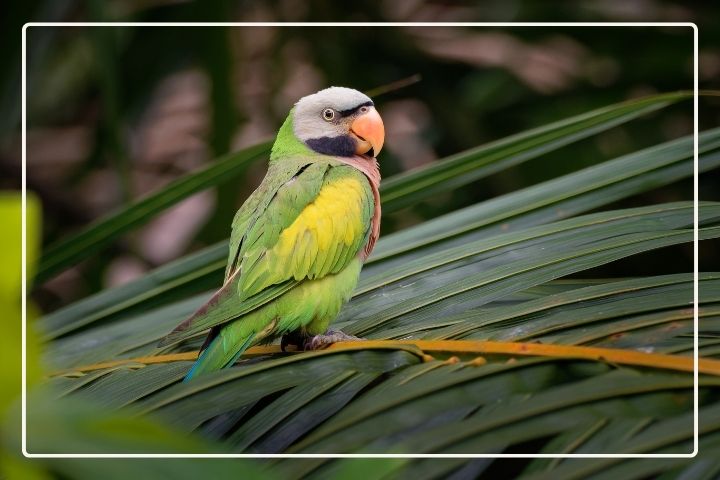
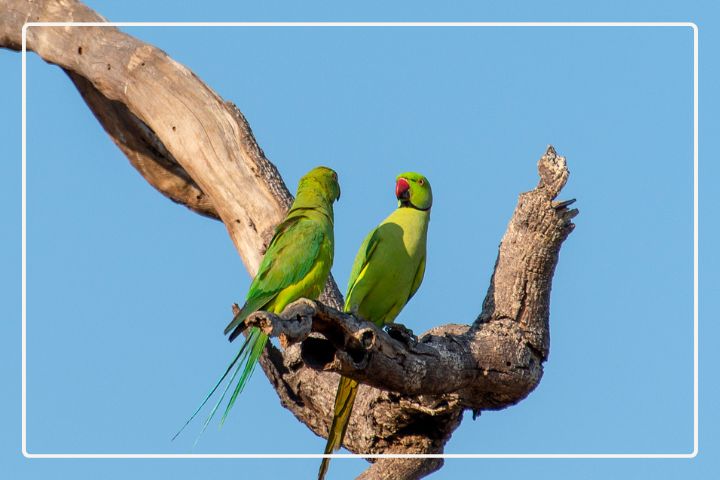
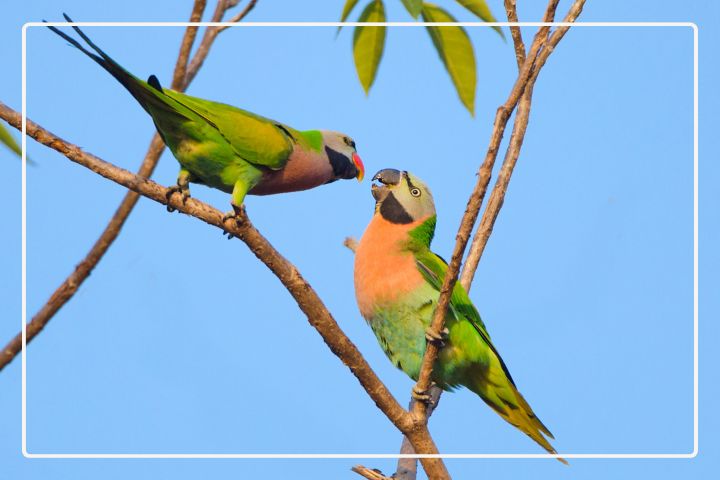
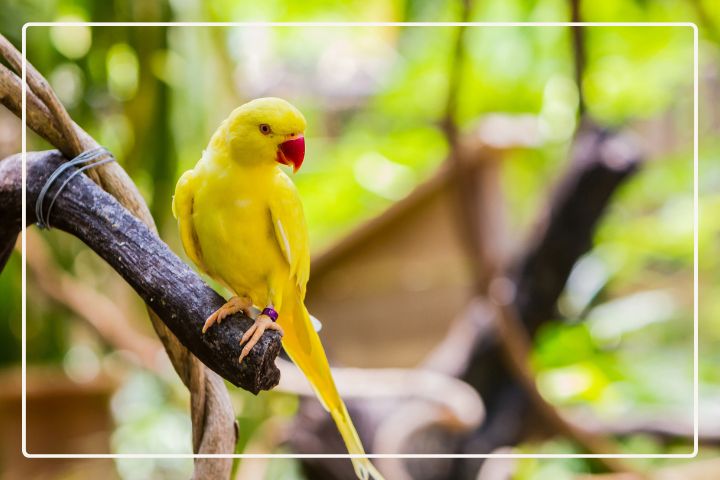
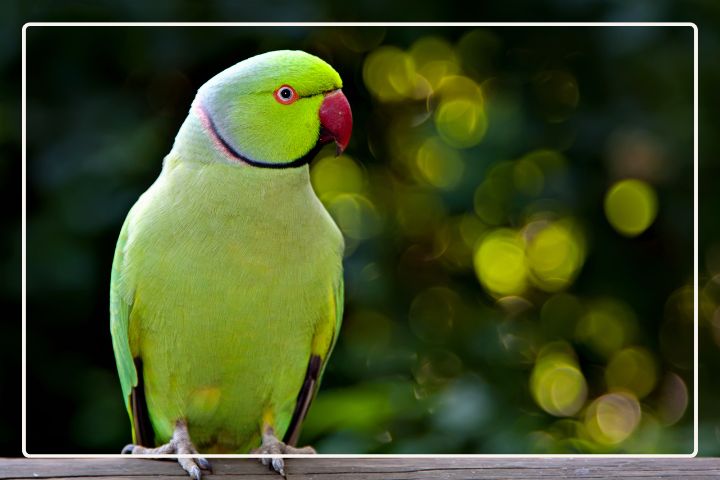

Some genuinely nice and utilitarian information on this internet site, also I think the design and style has good features.